The Odd Couple is a play by Neil Simon. Following its premiere on Broadway in 1965, the characters were revived in a successful 1968 film and 1970s television series, as well as several other derivative works and spin-offs. The plot concerns two mismatched roommates: the neat, uptight Felix Ungar and the slovenly, easygoing Oscar Madison. Simon adapted the play in 1985 to feature a pair of female roommates in The Female Odd Couple. An updated version of the 1965 show appeared in 2002 with the title Oscar and Felix: A New Look at the Odd Couple.

Broadway theatre, or Broadway, are the theatrical performances presented in the 41 professional theatres, each with 500 or more seats, located in the Theater District and the Lincoln Center along Broadway, in Midtown Manhattan, New York City. Broadway and London's West End together represent the highest commercial level of live theater in the English-speaking world.
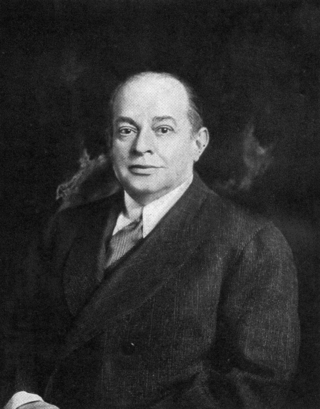
Charles Frohman was an American theater manager and producer, who discovered and promoted many stars of the American stage. Frohman produced over 700 shows, and among his biggest hit was Peter Pan, both in London and the US.
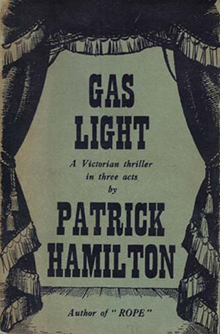
Gas Light is a 1938 thriller play, set in 1880s London, written by the British novelist and playwright Patrick Hamilton. Hamilton's play is a dark tale of a marriage based on deceit and trickery, and a husband committed to driving his wife insane in order to steal from her.
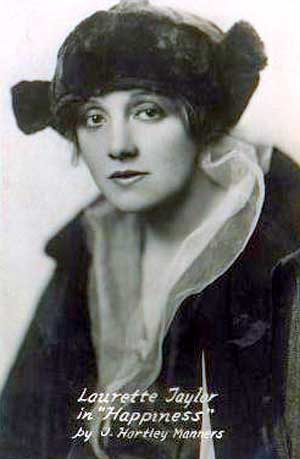
Laurette Taylor was an American stage and silent film star who is particularly well known for originating the role of Amanda Wingfield in the first production of Tennessee Williams's play The Glass Menagerie.
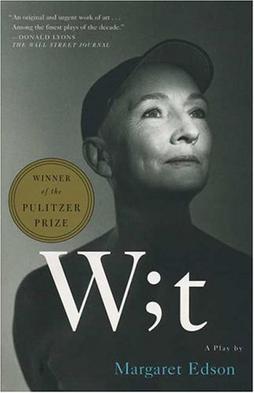
Wit is a one-act play written by American playwright Margaret Edson, which won the 1999 Pulitzer Prize for Drama. Edson used her work experience in a hospital as part of the inspiration for her play.

Justin Brooks Atkinson was an American theatre critic. He worked for The New York Times from 1922 to 1960. In his obituary, the Times called him "the theater's most influential reviewer of his time." Atkinson became a Times theater critic in the 1920s and his reviews became very influential. He insisted on leaving the drama desk during World War II to report on the war; he received the Pulitzer Prize in 1947 for his work as the Moscow correspondent for the Times. He returned to the theater beat in the late 1940s, until his retirement in 1960.

The Circle in the Square Theatre is a Broadway theater at 235 West 50th Street, within the basement of Paramount Plaza, in the Midtown Manhattan neighborhood of New York City. The current Broadway theater, completed in 1972, is the successor of an off-Broadway theater of the same name, co-founded around 1950 by a group that included Theodore Mann and José Quintero. The Broadway venue was designed by Allen Sayles; it originally contained 650 seats and uses a thrust stage that extends into the audience on three sides.
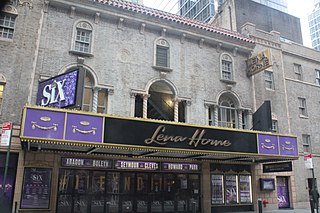
The Lena Horne Theatre is a Broadway theater at 256 West 47th Street in the Theater District of Midtown Manhattan in New York City. Opened in 1926, it was designed by Herbert J. Krapp in a Spanish Revival style and was constructed for Irwin Chanin. It has 1,069 seats across two levels and is operated by the Nederlander Organization. Both the facade and the auditorium interior are New York City landmarks.

The Booth Theatre is a Broadway theater at 222 West 45th Street in the Theater District of Midtown Manhattan in New York City. Opened in 1913, the theater was designed by Henry Beaumont Herts in the Italian Renaissance style and was built for the Shubert brothers. The venue was originally operated by Winthrop Ames, who named it for 19th-century American actor Edwin Booth. It has 800 seats across two levels and is operated by The Shubert Organization. The facade and parts of the interior are New York City landmarks.

Hazel Kirke is a play in four acts written by American actor and dramatist Steele MacKaye.
The Garden Theatre was a major theatre on Madison Avenue and 27th Street in New York City, New York. The theatre opened on September 27, 1890, and closed in 1925. Part of the second Madison Square Garden complex, the theatre presented Broadway plays for two decades and then, as high-end theatres moved uptown to the Times Square area, became a facility for German and Yiddish theatre, motion pictures, lectures, and meetings of trade and political groups.

The Herald Square Theatre was a Broadway theatre in Manhattan, New York City, built in 1883 and closed in 1914. The site is now a highrise designed by H. Craig Severance.
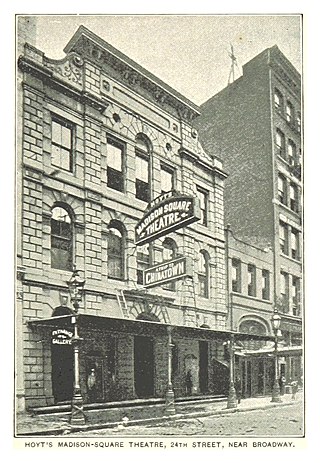
The Madison Square Theatre was a Broadway theatre in Manhattan, on the south side of 24th Street between Sixth Avenue and Broadway It was built in 1863, operated as a theater from 1865 to 1908, and demolished in 1908 to make way for an office building. The Madison Square Theatre was the scene of important developments in stage technology, theatre design, and theatrical tour management. For about half its history it had other names including the Fifth Avenue Theatre, Daly’s Fifth Avenue Theatre, Hoyt’s Madison Square Theatre, and Hoyt’s Theatre.
William Wallace Young was an American playwright, writer, and actor, best known for his play adaptation of the novel Ben-Hur in 1899.

Alfred Asher Klein was an English-born stage actor, singer and comedian who appeared in operettas and musical theatre in America in the late 19th century.
Young Mrs. Winthrop is an 1882 play by Bronson Howard which debuted on Broadway at the Madison Square Theatre on October 9, 1882, and ran for 183 performances, closing on April 7, 1883. It was the first play for which David Belasco served as stage manager at the theater.

Small Miracle is a 1934 play by Norman Krasna, presented on Broadway with Joseph Calleia in the featured role. Directed by George Abbott with a single setting designed by Boris Aronson, the three-act melodrama opened September 26, 1934, at the John Golden Theatre, New York. It continued at the 48th Street Theatre November 11, 1934 – January 5, 1935. On February 7, 1935, the play began a run at the El Capitan Theatre in Hollywood, with Calleia, Joseph King and Robert Middlemass reprising their Broadway roles.
Abbey's Park Theatre or Abbey's New Park Theatre was a playhouse at 932 Broadway and 22nd Street in what is now the Flatiron District of Manhattan in New York City. It opened as the New Park Theatre in 1874, and was in use until 1882 when it burned down and was never rebuilt as a theatre.

Paris Is Out! is a 1970 Broadway comedy by Richard Seff that starred Sam Levene and Molly Picon as Daniel and Hortense Brand, a married couple planning a vacation. The Broadway production ran for 96 performances after 16 previews at the Brooks Atkinson Theatre between February 2 and April 18, 1970.















